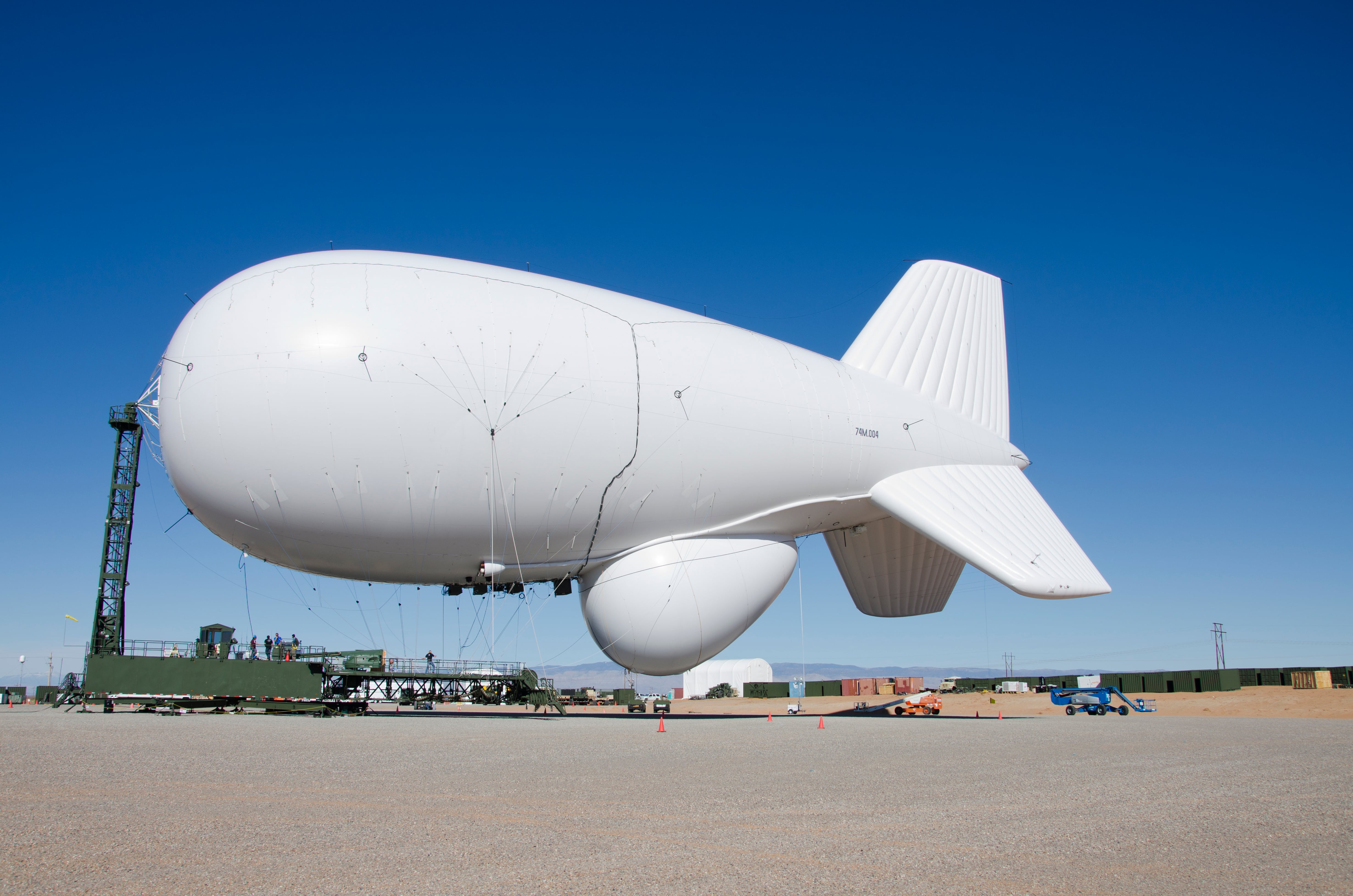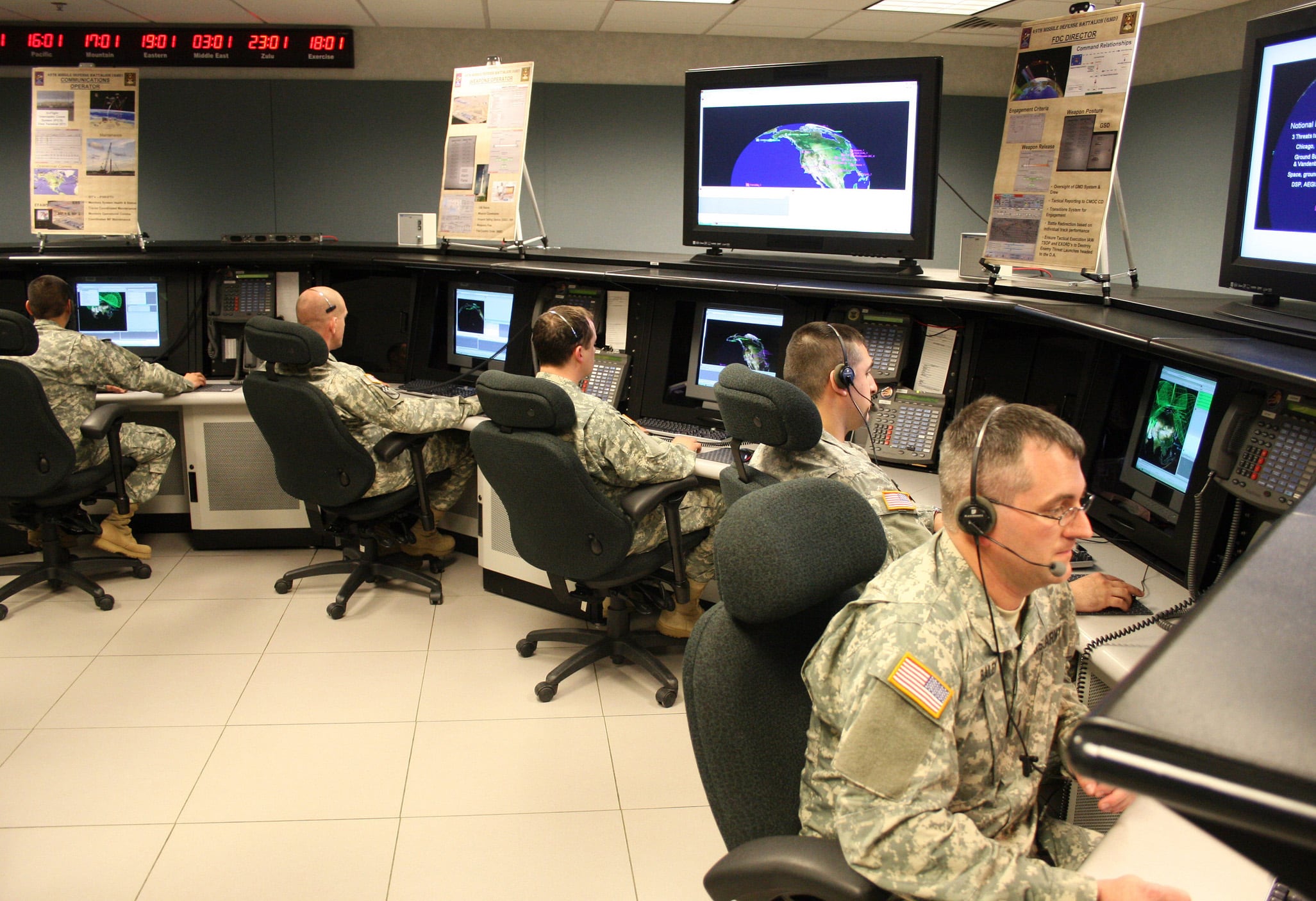Two Republican senators have introduced legislation that would establish more detailed plans for President Donald Trump’s new missile defense shield for the homeland – to include resurrecting several previously proposed plans and capabilities that were either canceled or placed on the back burner over the last decade.
In the bill, submitted Feb. 5 by Sens. Dan Sullivan, R-Alaska, and Kevin Cramer, R-N.D., the senators lay out a plan for missile defense for the continental U.S. that would include Aegis Ashore systems (only two such systems exist and are operating in Poland and Romania). The plan also calls for using blimps for detection of complex threats, expanding the current Ground-based Midcourse Defense system, or GMD, at Fort Greely, Alaska, and adding a brand new interceptor site on the east coast.
According to the bill, the amount authorized for the endeavor to establish a new missile defense shield for fiscal 2026 would total approximately $19.5 billion, which comes to nearly twice as much as the Missile Defense Agency’s fiscal 2025 budget request of $10.4 billion.
If the bill passes, it would require all operations and sustainment of missile defense systems to be transferred to the services, freeing up the Missile Defense Agency, or MDA, to focus entirely on capability research and development. While this has been done for certain programs, such as the Patriot Air and Missile Defense System — developed by MDA but then transferred to the Army — the agency has opposed the transfer of other capabilities to the services, like the Terminal High Altitude Area Defense System.
Trump’s executive order to develop a next-generation homeland missile defense shield marks a shift in the country’s long-standing homeland missile defense strategy, which has focused on threats from rogue nations like North Korea and Iran, rather than from peer adversaries like China or Russia.
The order – titled “The Iron Dome for America” in a nod to the successful, lowest tier of Israel’s multilayered air defense system of the same name – also addresses a broader array of complex threats, from hypersonic weapons to cruise missiles and drones.
“Senator Cramer and I are introducing legislation to build a homeland missile defense system that can protect our country from the intensifying threats and growing arsenals of China and Russia,” Sullivan said in a statement Thursday.
The bill, named the “Iron Dome Act” builds upon both Trump’s order for a missile defense shield and recommendations from the 2022 Missile Defense Review, Sullivan noted.

Making a comeback
This year marks a decade since a giant tethered aerostat – the Joint Land Attack Cruise Missile Defense Elevated Netted Sensor System, or JLENS, as it is better known – broke free from its mooring station near Baltimore and took a three-hour jaunt through the skies of Pennsylvania, dragging its several-thousand-foot tether, which hit power lines along the way and caused significant power outages.
JLENS ultimately landed in a grove of trees in the countryside where Pennsylvania state troopers were ordered to open fire on the blimp to deflate it.
The Raytheon-made aerostat was designed to work in a pair, one with a fire-control system, and the other with powerful surveillance sensors capable of tracking swarming boats and vehicles and detecting and tracking cruise missile threats from Boston all the way to Norfolk, Virginia. It was canceled during its operational exercise at Aberdeen Proving Ground following the incident.
Sullivan and Cramer’s bill would require the Army secretary to field dirigibles, including airships and aerostats, “in support of the missile defense of the United States homeland from ballistic, hypersonic and cruise missiles and drones,” it states. The legislation would authorize $100 million for the effort.
The bill would also authorize $25 million for the Missile Defense Agency to plan and design an east coast-based missile defense interceptor site at Fort Drum, New York, much like the GMD system at Fort Greely.
In 2016, the MDA was in the process of choosing a preferred site for a potential east coast location, but the agency never ended up settling on a spot after conducting environmental and feasibility studies of such an architecture.
MDA’s director at the time stressed the agency was not advocating for an east coast site, stating repeatedly that the site was not necessary and the agency would prefer to focus on other efforts, including improving the GMD system with better interceptors. But various lawmakers have continued to push for it over the past decade. One of its supporters is Rep. Elise Stefanik, R-N.Y., who has Fort Drum in her district. Stefanik is set to leave Congress after Trump selected her to serve as the new U.S. ambassador to the United Nations.
Trump’s “Iron Dome” executive order also included a renewed pursuit of space-based interceptors. The bill would support that effort, in addition to continuing to pursue a robust space-based threat detection layer. The legislation would authorize $60 million for space sensors and $900 million for space-based missile defense.

Building up
The legislation calls for the additional procurement of a variety of missile defense systems already in operation and the acceleration of a variety of development programs for next-generation interceptor capability.
The bill would also allow for an expansion of the GMD system at Fort Greely up to 80 missile silos – doubling the number of silos already in place – and it would accelerate the development of the Next-Generation Interceptor, or NGI, that will replace all of the ground-based interceptors in the system. A total of $12 billion would be authorized to expand the system.
MDA wants to field NGI by 2028, but Congress is pushing for an earlier deadline. Lockheed Martin was chosen last year to develop the system, in a surprise decision that came one year earlier than planned. The company was competing against a Northrop Grumman-Raytheon team.
Under the bill, the defense secretary would be required to field a minimum of 80 interceptors at Fort Greely no later than Jan. 1, 2038.
The bill also requires MDA to accelerate the development of its Glide-Phase Interceptor. The agency chose Northrop Grumman over Raytheon in September to build an interceptor capable of defeating hypersonic weapons in the boost phase of flight. The decision also came earlier than originally planned.
The Pentagon would also have to look into conducting parallel development of an alternative interceptor, according to the bill.
Part of the new missile defense shield would include the establishment of Aegis Ashore sites in Alaska, Hawaii and on the east coast, according to the legislation. The bill authorizes $1 billion for site selection and an execution plan for construction of the sites on the east coast and in Alaska, as well as an additional $250 million to complete and certify the paused Aegis Ashore system in Hawaii.
The number of THAAD systems and interceptors would also increase, should the bill pass. The legislation would authorize $1.4 billion to “accelerate the production and fielding of the [THAAD] system (including AN/TPY-2 radars) for forward deployment and homeland defense as the secretary and president consider appropriate,” the bill states.
The legislation also pushes to boost production numbers for SM-3 Block IB and Block IIA missiles that are fired from U.S. Navy Aegis weapon systems, for a total of $1 billion. The MDA attempted to end SM-3 Block IB production in its fiscal 2025 budget request in order to pursue higher development priorities, but Congress has restored funding to keep the line hot in the annual defense authorization bill. It has yet to approve fiscal 2025 funding.
Another $1.5 billion would cover the production of Patriot missiles and batteries.
Jen Judson is an award-winning journalist covering land warfare for Defense News. She has also worked for Politico and Inside Defense. She holds a Master of Science degree in journalism from Boston University and a Bachelor of Arts degree from Kenyon College.




